Nature’s red flag
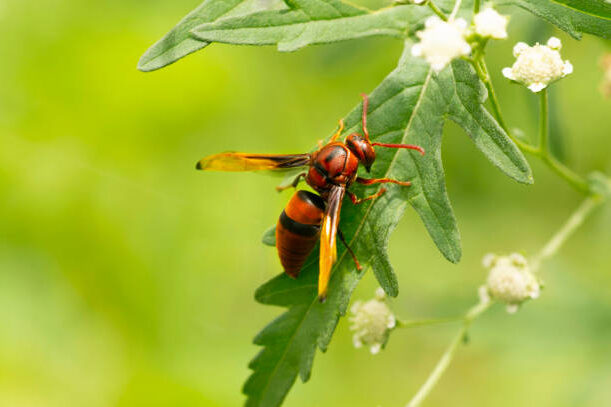
Paper wasps aren’t environmental engineers, but their building habits are turning them into inadvertent hazard detectors. By chewing local materials, often contaminated wood or dust near the old mine, to make nest pulp, they effectively collect and concentrate radioactivity in structures elevated above the ground. That makes nests visible, contained mediums for radiation testing. Scientists now see these insects as living indicators: each nest they build offers clues about invisible environmental threats, particularly in areas with known industrial or radiation-history.
A nest built with radioactive fibers
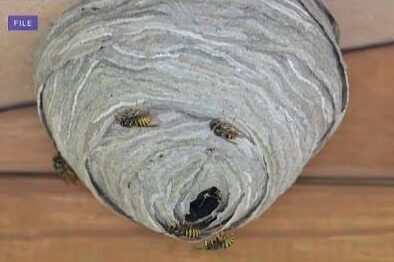
Near an old nuclear facility in South Carolina, radioactive wasp nests were found in one of the Savannah River Site(SRS) near Aiken. Paper wasps chew wood fibers and plant stems into pulp, which they mix with saliva to make that familiar grey “paper” shape we recognize as their nest material. In this case, scientists believe the wasps unknowingly incorporated contaminated wood pieces, perhaps from uranium‑dust–tainted buildings or soil, into the material. But it registered levels up to ten times what federal safety thresholds allow. The result was a construction that, without intention, became radioactive simply because of where those fibers came from. According to report said that it was found on post near tank used to store nuclear waste. The site has 51 waste tank, eight of which have been operationally closed.
Legacy of nuclear cleanup
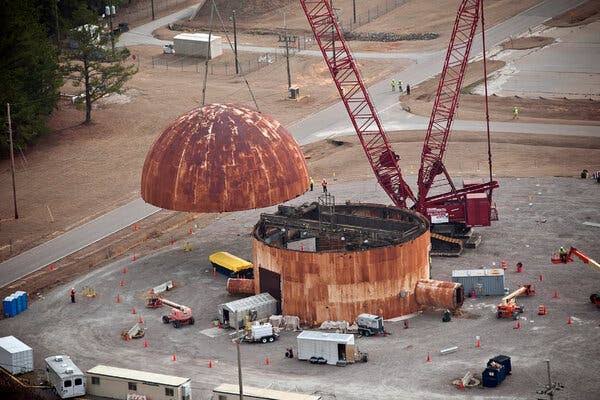
The nest sat near a cold war nuclear facility, an abandoned uranium processing or mining site that had once hosted nuclear operations. The nest was found on July 3 but the discovery was documented in a July 22 report by the US Department of Energy which owns the site. Although officially decommissioned or sealed decades ago, residual contamination, especially in building dust or soil, can linger long after the main activity stops. Environmental monitoring teams have repeatedly noted that “onsite legacy radioactive contamination” may result in isolated hotspots, such as this wasp nest, rather than new or active leaks. Some reports stated that the site produced 165 million gallons of radioactive liquid waste which has been evaporated to 34 million gallons.
No immediate danger

Fortunately, officials stress the radiation levels in the nest, while above regulatory limits, still pose no known health risk to workers or the surrounding population. After discovery, the nest was sprayed and handled as radiological waste per safety protocols, and nearby ground and surfaces were carefully surveyed with no contamination detected . In plain terms: it’s a striking find, but not a hazard, for now. Additionally, the remaining 43 waste tank in various states are also in the state of closure process.
More nests possible
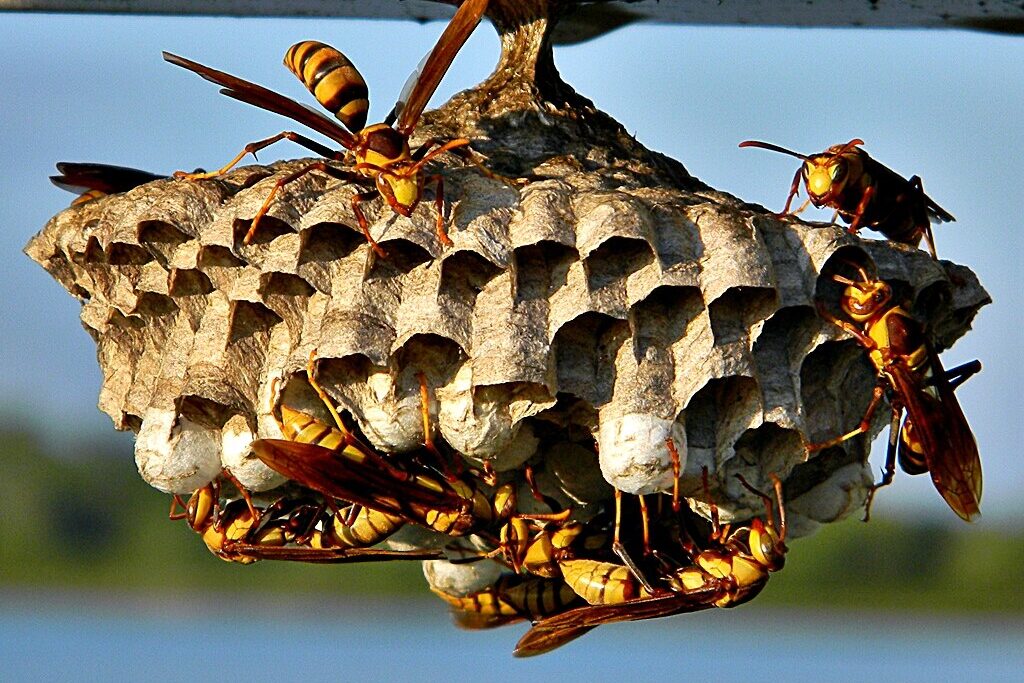
With the first radioactive nest uncovered, researchers are now actively inspecting nearby areas to find additional similarly contaminated structures. In fact, multiple wasp nests with elevated radioactivity have since been documented at the site, according to federal reports, up to four separate “hot” nests were found during follow-up checks. Since paper wasps build nests close to where they forage, these findings suggest radiation isn’t isolated to one spot. The additional nests reveal a broader pattern of contamination and underscore the need for systematic surveying in legacy-mine zones.
Science still digging

The investigation into the radioactive nest is far from over. Officials have begun isotope-level testing to identify which specific radionuclides are present, whether it’s uranium, its decay products like radium or thorium, or other Legacy isotopes. Researchers are also exploring whether the radioactivity comes from nearby contaminated dust, building materials, or soil particles. These ongoing analyses will help estimate ecological risks, assess how radioactivity moves through insect behavior, and inform protocols for monitoring nests in similarly exposed environments.
Not as sealed as thought
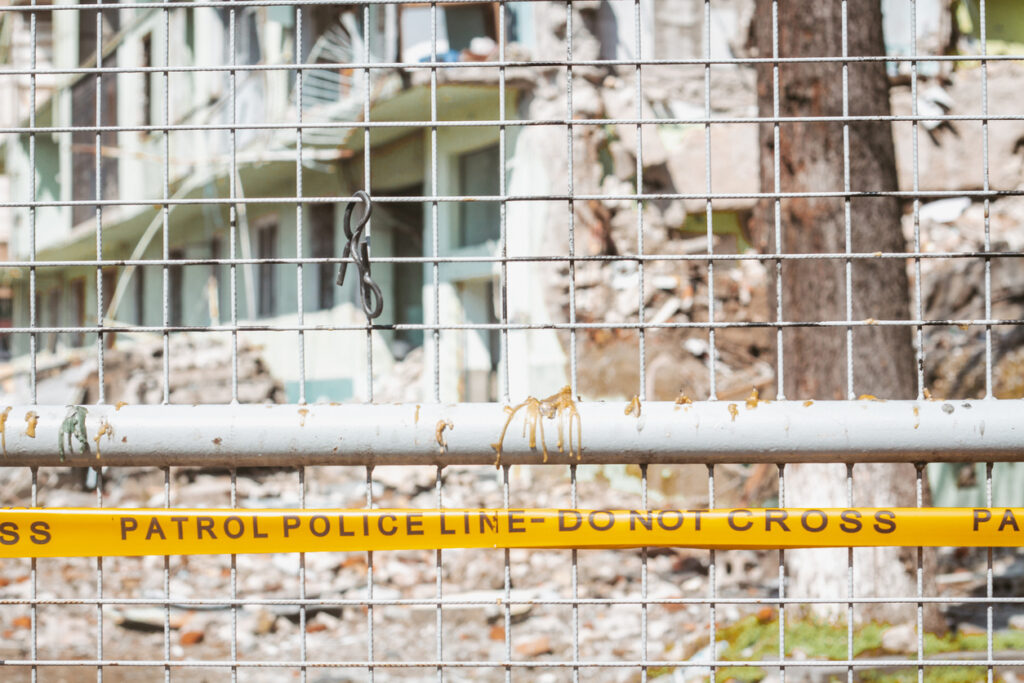
Although the mine was officially closed and sealed decades ago, the discovery shows that heritage contamination can persist and spread, even through the simplest natural constructions. Federal agencies refer to this as “legacy contamination”: radiation left over from historic operations that didn’t leak but lingered in surface dust or structural materials. The nest’s radioactivity, detected in a whole structure, meaning actual site closure doesn’t guarantee immunity. Regulatory bodies now acknowledge that sealed sites must still be monitored for unexpected environmental pathways like this.
This story A Radioactive Wasp Nest Was Just Discovered, Here’s What We Know So Far was first published on Daily FETCH


